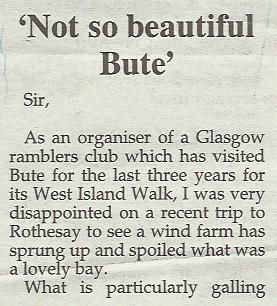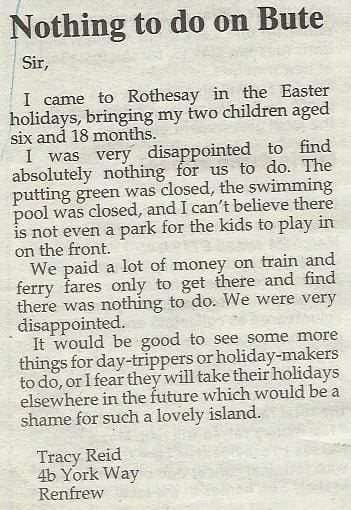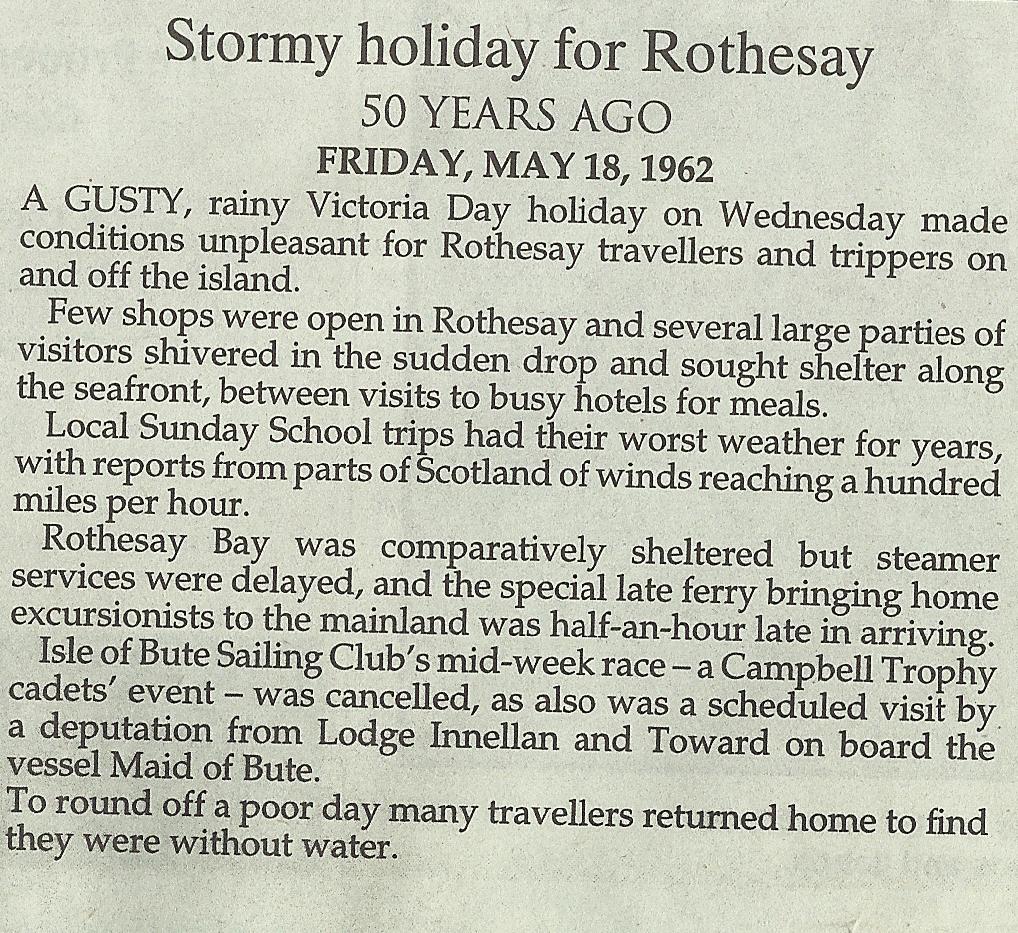Ramblers noticing three small wind turbines at Ardbeg Farm, Bute write to the Buteman to complain about the views.
Their Representative on Earth, Mr Mark Anderson, is not afraid to criticise ‘the overly generous grants and annual subsidies paid out to the landowners [who build wind turbines]’ while conveniently forgetting that the carbon cost of coal and gas has never been priced in to these fuels (an effective subsidy lasting over decades) or that the entire UK nuclear industry (largely owned by the French) is benefiting from a £multi-billion government-paid-for decommissioning exercise.


©The Buteman
Of course, one swallow does not make a Summer. It would be a pity if even one rambler stopped coming to Bute because of wind turbines at Ardbeg or, hopefully, larger machines down the line at Ascog where there is great potential for wind energy.
However, one has to wonder how Mark Anderson’s group even got to Bute without seeing a turbine – there are now so many round about – and why, indeed, they did not turn back in disgust at the site of the first one they saw if they are so offended by them? Perhaps because they are now so much a part of our landscape?
With such confusing questions to answer it is refreshing to see a simple lament from a young mother visting the Island.

©The Buteman
Those who complain that turbines will destroy the tourism scene on Bute would do well to remember that there are other problems faced by tourism on the Island:
- it is expensive to get to
- the weather is frequently poor
- there are few indoor activities
- there are many alternative locations
Perhaps, as when an earlier form of energy – coal – was mined at Ascog, we should consider harnessing the energy around us which has been blowing strongly over the Isle of Bute since time immemorial. Tourism need not be the only choice!

©The Buteman
About the time Glasgow’s wealthy Victorian tobacco merchants and slave owners built their villas on the foreshore around Bute coal was being mined and water power was being used at three mills around Ascog to provide employment alongside the leisure enjoyed by the moneyed elite escaping the city.
After the elite came mass tourism ‘doon the watter’, and after mass tourism came package holidays abroad. Tourism on Bute is not now what is once was, although Bute remains a great place to visit.
However, there is no reason why tourism should not co-exist with renewable energy generation and – as a recent VisitScotland poll found out – little to fear from turbines themselves.
Whilst the occasional letter writer to the local paper will profess horror at the thought of wind turbines only 8.3% of those polled Agreed Strongly with the question ‘Wind farms spoil the look of the Scottish countryside’. Impacts on planned or repeat visits are also lower than the doomsayers would suggest.
Perhaps the only thing we have to fear is fear itself.